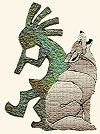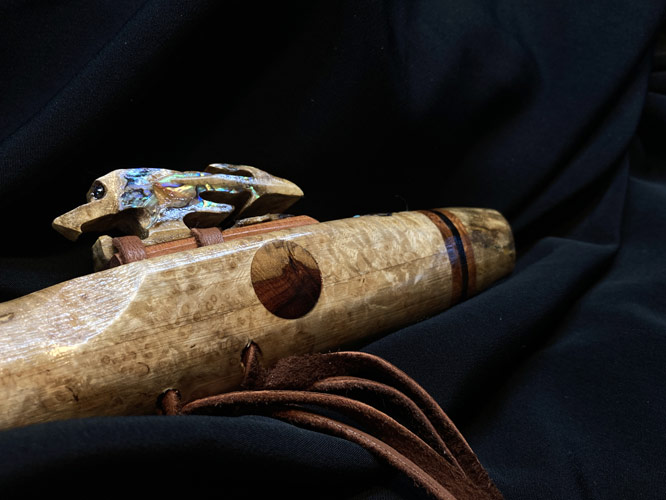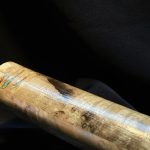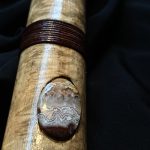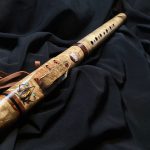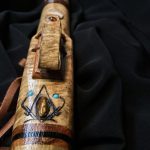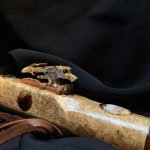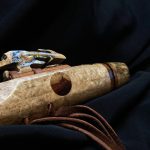Burls, when found growing on the sides of trees, or within a tree’s root system, are an interesting anomaly for any variety. They are nothing more than a wart, and look and behave without regard for any attributes of the variety of tree on which they’re growing. Building anything from a burl is challenging and frustrating as there are voids, twisted grain, and weird knots. Oddly, they are always more expensive than their straight grained counterpart. I’m guessing it’s due to their rare and unique beauty. Generally, they’re popular as bookends.
This flute was built from Oregon myrtle burl wood. Fortunately only 4 voids in the body had to be filled with powdered turquoise from Arizona’s Sleeping Beauty mine. One previous project, specifically California Buckeye burl, had 56 holes in need of backfilling.
Tuned to Gm, the woods used are limited to the myrtle burl, SE Asian amboyna burl, and macassar ebony. The stone work includes Mexican crazy lace agate, Mexican jelly opal. turquoise, labradorite, abalone, amber, and hematite. There will be a burl quiz next week, now go out and play. No bullying.
